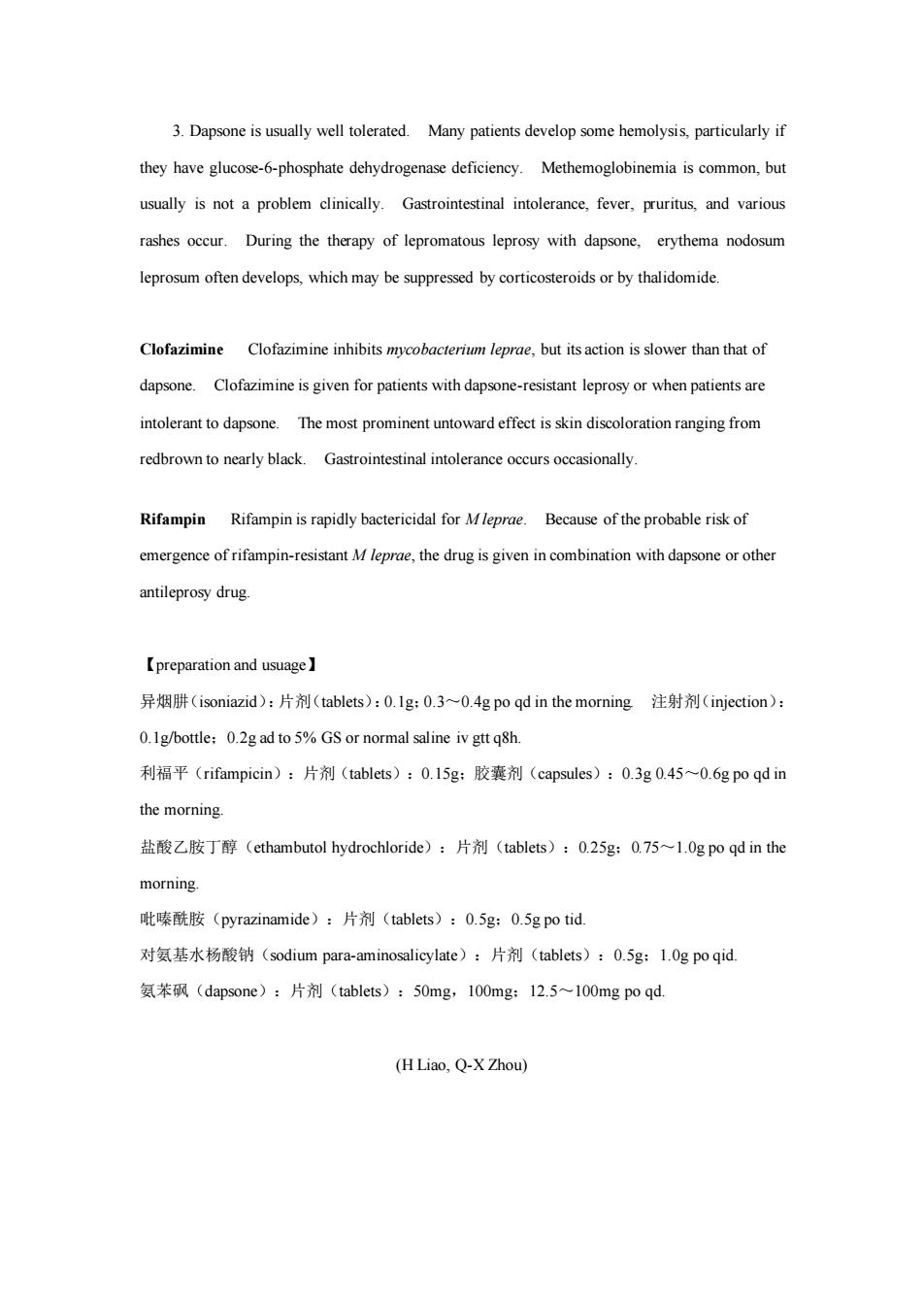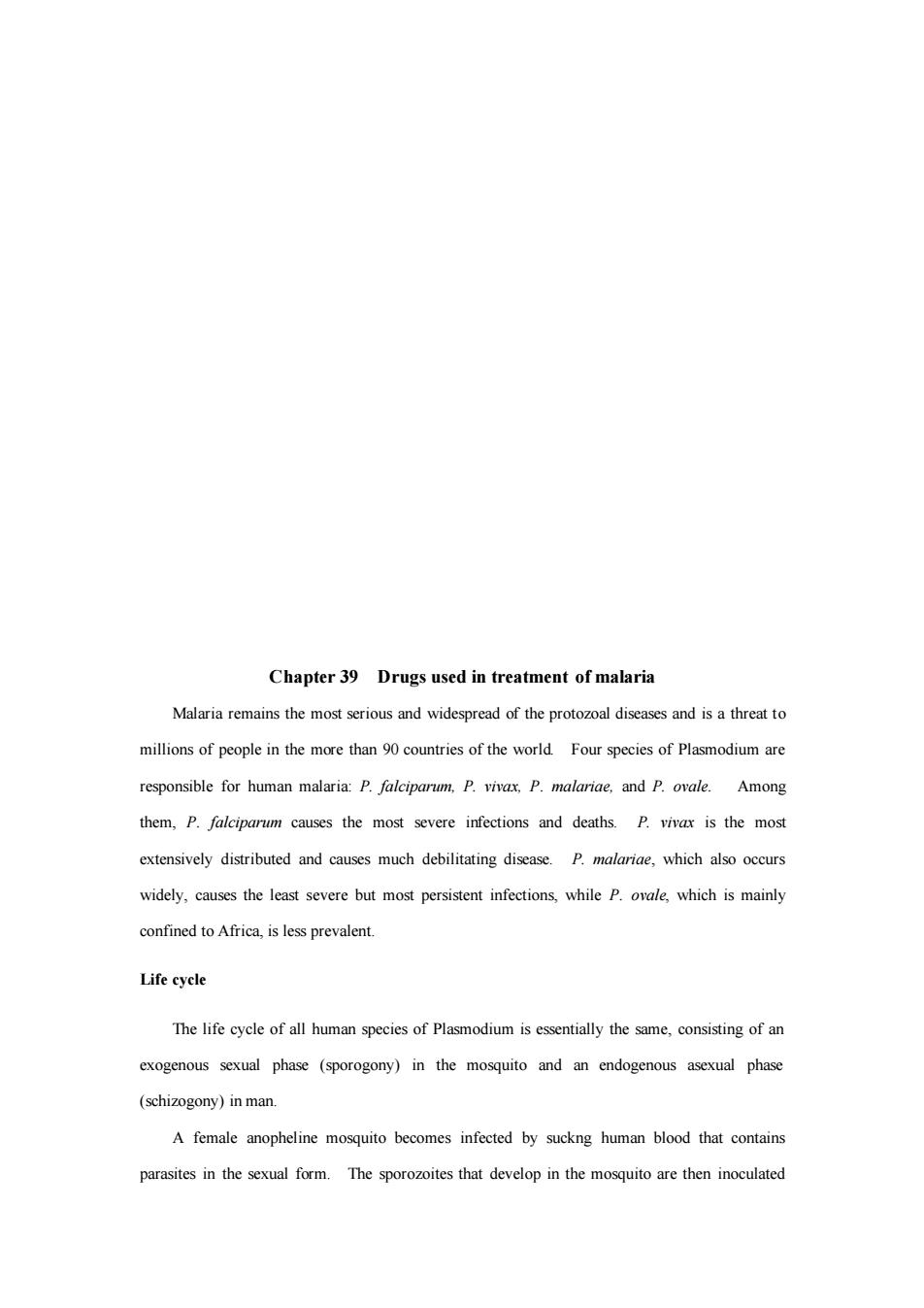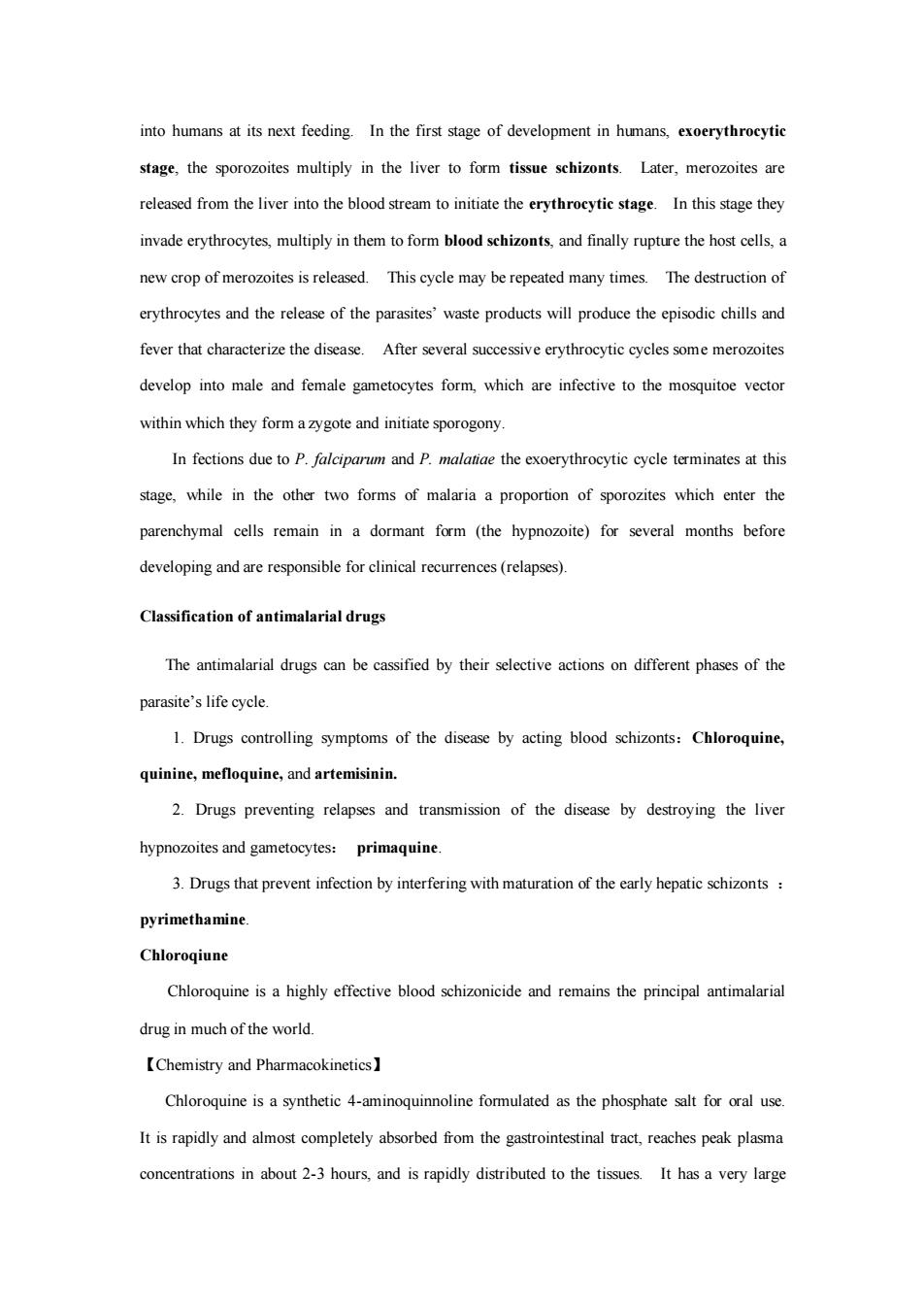
3.Dapsone is usually well tolerated.Many patients develop some hemolysis,particularly if they have glucose-6-phosphate dehydrogenase deficiency.Methemoglobinemia is common,but usually is not a problem clinically.Gastrointestinal intolerance.fever.pruritus,and various rashes occur.During the therapy of lepromatous leprosy with dapsone.erythema nodosum leprosum often develops,which may be suppressed by corticosteroids or by thalidomide. Clofazimine Clofazimine inhibits mycobacterm leprae,but itsaction is slower than that of dapsone.Clofazimine is given for patients with dapsone-resistant leprosy or when patients are intolerant to dapsone.The most prominent untoward effect is skin discoloration ranging from redbrown to nearly black.Gastrointestinal ocasionally. Rifampin Rifampin is rapidly bactericidal for Mleprae.Because of the probable risk of emergence of rifampin-resistant Mleprae,the drug is given in combination with dapsone or other antileprosy drug 【preparation and usuage】 异烟肼(sd):片剂(tablets):0.lg:0.3~0.4 g po qd in the morning注射剂(injection): 0.1g/bottle:0.2g ad to%GS or normal saline iv gtt q8h. 利福平(rifampicin):片剂(tablets):0.15g:胶囊剂(capsules):0.3gQ.45~0.6 g po qd in the morning. 盐酸乙胺丁醇(ethambutol hydrochloride):片剂(tablets):0.25g:Q.75~1.0 g po qd in the morning. 吡嗪酰胺(Pyrazinmide):片剂(tablets):0.5g:0.5 po tid. 对氨基水杨酸钠(sodium para-aminosalicylate):片剂(tablets):0.5g:1.0 g poqid. 氨苯a砜(dapsone):片剂(tablets):50mg,100mg:12.5~100 mg po qd. (H Liao,Q-X Zhou)
3. Dapsone is usually well tolerated. Many patients develop some hemolysis, particularly if they have glucose-6-phosphate dehydrogenase deficiency. Methemoglobinemia is common, but usually is not a problem clinically. Gastrointestinal intolerance, fever, pruritus, and various rashes occur. During the therapy of lepromatous leprosy with dapsone, erythema nodosum leprosum often develops, which may be suppressed by corticosteroids or by thalidomide. Clofazimine Clofazimine inhibits mycobacterium leprae, but its action is slower than that of dapsone. Clofazimine is given for patients with dapsone-resistant leprosy or when patients are intolerant to dapsone. The most prominent untoward effect is skin discoloration ranging from redbrown to nearly black. Gastrointestinal intolerance occurs occasionally. Rifampin Rifampin is rapidly bactericidal for M leprae. Because of the probable risk of emergence of rifampin-resistant M leprae, the drug is given in combination with dapsone or other antileprosy drug. 【preparation and usuage】 异烟肼(isoniazid):片剂(tablets):0.1g;0.3~0.4g po qd in the morning. 注射剂(injection): 0.1g/bottle;0.2g ad to 5% GS or normal saline iv gtt q8h. 利福平(rifampicin):片剂(tablets):0.15g;胶囊剂(capsules):0.3g 0.45~0.6g po qd in the morning. 盐酸乙胺丁醇(ethambutol hydrochloride):片剂(tablets):0.25g;0.75~1.0g po qd in the morning. 吡嗪酰胺(pyrazinamide):片剂(tablets):0.5g;0.5g po tid. 对氨基水杨酸钠(sodium para-aminosalicylate):片剂(tablets):0.5g;1.0g po qid. 氨苯砜(dapsone):片剂(tablets):50mg,100mg;12.5~100mg po qd. (H Liao, Q-X Zhou)

Chapter 39 Drugs used in treatment of malaria Malaria remains the most serious and widespread of the protozoal diseases and is a threat to millions of people in the more than90 countries of the world Four species of Plasmodium are responsible for human malaria:P.falciparum.P.vivax.P.malariae.and P.ovale.Among them,P.falciparum causes the most severe infections and deaths.P.vivax is the most extensively distributed and causes much debilitating disease.P.malariae,which also occurs widely,causes the least severe but most persistent infections,while P.which is mainly confined to Africa,is less prevalent. Life eyele The life ycle of all human species of Plasmodium is essentially the same,consisting of an exogenous sexual phase (sporogony)in the mosquito and an endogenous asexual phase (schizogony)in man. A female anopheline mosquito becomes infected by suckng human blood that contains parasites in the sexual form.The sporozoites that develop in the mosquito are then inoculated
Chapter 39 Drugs used in treatment of malaria Malaria remains the most serious and widespread of the protozoal diseases and is a threat to millions of people in the more than 90 countries of the world. Four species of Plasmodium are responsible for human malaria: P. falciparum, P. vivax, P. malariae, and P. ovale. Among them, P. falciparum causes the most severe infections and deaths. P. vivax is the most extensively distributed and causes much debilitating disease. P. malariae, which also occurs widely, causes the least severe but most persistent infections, while P. ovale, which is mainly confined to Africa, is less prevalent. Life cycle The life cycle of all human species of Plasmodium is essentially the same, consisting of an exogenous sexual phase (sporogony) in the mosquito and an endogenous asexual phase (schizogony) in man. A female anopheline mosquito becomes infected by suckng human blood that contains parasites in the sexual form. The sporozoites that develop in the mosquito are then inoculated

into humans at its next feeding.In the first stage of development in humans,exoerythrocytic stage,the sporozoites multiply in the liver to form tissue schizonts.Later,merozoites are released from the liver into the blood stream to initiate the erythroeytic stage.In this stage they invade erythrocytes,multiply in them to form finally rupture the host cellsa new crop of merozoites is released.This cycle may be repeated many times.The destruction of erythrocytes and the release of the parasites'waste products will produce the episodic chills and fever that characterize the disease.After several successive erythrocytic cycles some merozoites develop into male and female gametocytes form,which are infective to the mosquitoe vector within which they form azygote and initiate sporogony. In fections due to P.falciparm and P.malatiae the exoerythrocytic cycle terminates at this stage.while in the other two forms of malaria a proportion of sporozites which enter the parenchymal cells remain in a dormant form (the hypnozoite)for several months before developing and are responsible for clinical recurrences(relapses). Classification of antimalarial drugs The antimalarial drugs can be cassified by their selective actions on different phases of the parasite's life cycle. 1.Drugs controlling symptoms of the disease by acting blood schizonts:Chloroquine quinine,mefloquine,and artemisinin. 2.Drugs preventing relapses and transmission of the disease by destroying the liver hypnozoites and gametocytes:primaquine 3.Drugs that prevent infection by interfering with maturation of the early hepatic schizonts pyrimethamine. Chlorogiune Chloroquine is a highly effective blood schizonicide and remains the principal antimalarial drug in much of the world. 【Chemistry and Pharmacokinetics】 Chloroquine is a synthetic 4-aminoquinnoline formulated as the phosphate salt for oral use. It is rapidly and almost completey absorbed fom the gastrointestinal tract,reaches peak plasma concentrations in about 2-3 hours.and is rapidly distributed to the tissues.It has a very large
into humans at its next feeding. In the first stage of development in humans, exoerythrocytic stage, the sporozoites multiply in the liver to form tissue schizonts. Later, merozoites are released from the liver into the blood stream to initiate the erythrocytic stage. In this stage they invade erythrocytes, multiply in them to form blood schizonts, and finally rupture the host cells, a new crop of merozoites is released. This cycle may be repeated many times. The destruction of erythrocytes and the release of the parasites’ waste products will produce the episodic chills and fever that characterize the disease. After several successive erythrocytic cycles some merozoites develop into male and female gametocytes form, which are infective to the mosquitoe vector within which they form a zygote and initiate sporogony. In fections due to P. falciparum and P. malatiae the exoerythrocytic cycle terminates at this stage, while in the other two forms of malaria a proportion of sporozites which enter the parenchymal cells remain in a dormant form (the hypnozoite) for several months before developing and are responsible for clinical recurrences (relapses). Classification of antimalarial drugs The antimalarial drugs can be cassified by their selective actions on different phases of the parasite’s life cycle. 1. Drugs controlling symptoms of the disease by acting blood schizonts:Chloroquine, quinine, mefloquine, and artemisinin. 2. Drugs preventing relapses and transmission of the disease by destroying the liver hypnozoites and gametocytes: primaquine. 3. Drugs that prevent infection by interfering with maturation of the early hepatic schizonts : pyrimethamine. Chloroqiune Chloroquine is a highly effective blood schizonicide and remains the principal antimalarial drug in much of the world. 【Chemistry and Pharmacokinetics】 Chloroquine is a synthetic 4-aminoquinnoline formulated as the phosphate salt for oral use. It is rapidly and almost completely absorbed from the gastrointestinal tract, reaches peak plasma concentrations in about 2-3 hours, and is rapidly distributed to the tissues. It has a very large